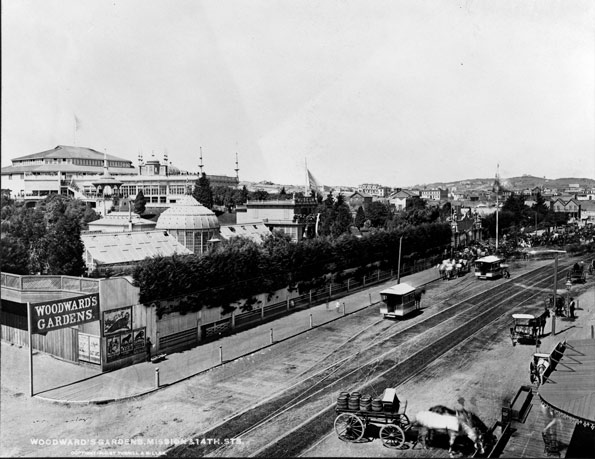Our History
From the humble beginnings of a lone California grizzly bear to state-of-the-art animal care and wellness, our rich history explains the evolution of our mission to care, connect, and conserve.

Late 1800s: The Bear Beginnings
Our story began more than a century ago with one bear named Monarch. He was California’s last captive grizzly, and he became an important symbol of the state’s evolving relationship with vanishing wildlife. Monarch’s affiliation with the San Francisco Zoo began in 1889 when San Francisco Examiner media magnate, William Randolph Hearst, engaged one of his reporters, Allen Kelly, in a heated debate over whether grizzlies still existed in California. Hearst ended the argument by challenging Kelly to go out and find one. Photographic proof would not suffice; Kelly had to bring the animal back alive. Kelly wrote that William Randolph Hearst “wanted to present to the city a good specimen of the big California bear, partly because he believed the species was almost extinct,” but also to give the people of San Francisco a unique and marvelous gift.
Kelly had great admiration and sympathy for the bears: “One of the most amiable and well-behaved denizens of the forest, Bruin has ever been an outlaw and a fugitive with a price on his pelt and no rights which any man is bound to respect. Like most outlawed men, he has been supplied with a reputation much worse than he deserves as an excuse for his persecution and a justification to his murderers. Every man’s hand has been against him, but seldom has his paw been raised against man except in self-defense.” Still, Kelly had an assignment. After nine months in the San Gabriel Mountains of Ventura County, Kelly and the Examiner party lured an enormous grizzly into a log catch pen baited with honey and mutton on Mt. Gleason. They named the bear Monarch, after the old San Francisco Examiner, “the Monarch of the Dailies.”
Kelly described Monarch: “He stands four feet high at the shoulder, measures three feet across the chest, 12 inches between the ears, and 18 inches from ear to nose, and his weight is estimated by the best judges at from 1,200 to 1,600 pounds. He never has been weighed. In disposition he is independent and militant. He will fight anything from a crowbar to a powder magazine and permit no man to handle him while he can move a muscle. And yet he was not unreasonably quarrelsome, but preserved an attitude of armed neutrality. He would accept peace offerings from my hand, taking care not to include my fingers, but would tolerate no petting…he knew my voice and when I called him by his name, ‘Monarch,’ he would look up at me not unkindly and, if I had nothing for him, lay his head upon his paws again and go to sleep.”
They transported the last and largest captive California grizzly through eastern Ventura County to San Francisco by sled, wagon, and railroad, arriving on November 3, 1889 to joyous parades and front-page fanfare. The Examiner claimed that 20,000 people visited Woodward’s Garden to see the “only California grizzly in captivity” on November 10, 1889.
Monarch lived more than 20 years in captivity — first in Woodward’s Garden in the Mission District, then in Golden Gate Park. Although he never set paw in the Zoo’s current location, he inspired Herbert Fleishhacker to pursue his dream of a San Francisco Zoo here. Monarch became a figure of strength and rejuvenation when he survived the great 1906 earthquake and fire in San Francisco.
After Monarch died in 1911, he was mounted and placed on exhibit at the DeYoung Museum’s Natural History Museum. Monarch remained in storage at the DeYoung until the curator retired. The mounted bear was then given to the California Academy of Sciences. Sculptor Robert Schmidt made a clay model of Monarch for use in designs for the California emblem. In 1953 Monarch was sketched as the model for the state flag.
In his lifetime, Monarch delighted thousands of visitors, sired two cubs, and is forever commemorated on the California state flag, so his spirit goes on to represent the city’s commitment to sharing space with vanishing wildlife.
About the Zoo
